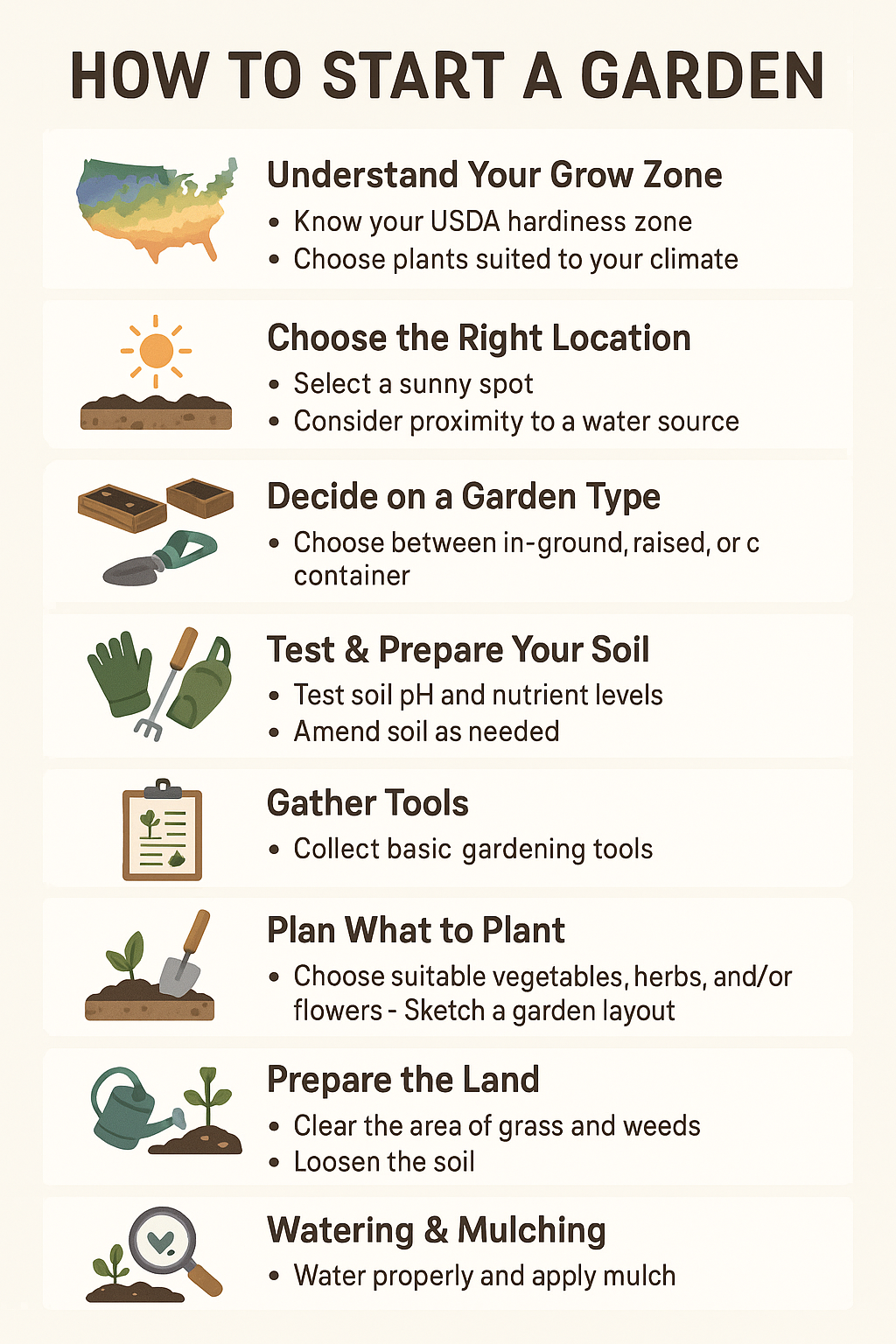A Guide To Starting A Garden

By Derrick R. Stallings – HuntingOfficer.com
Starting a garden is both rewarding and therapeutic—but to do it right, you’ll want to take a thoughtful and well-prepared approach. Here’s a detailed step-by-step guide to help you get started:
🌍 1. Understand Your Grow Zone
Your USDA Hardiness Zone determines what plants will thrive in your area. You can find it by entering your ZIP code on the USDA’s website. Each zone has average minimum winter temperatures:
- Zone 3-5: Cold climates (shorter growing season)
- Zone 6-7: Moderate climates
- Zone 8-11: Warm climates (longer growing season)
Knowing your zone helps you choose the right veggies, herbs, and flowers that will survive and flourish.
☀️ 2. Choose the Right Location
Look for a sunny spot—most vegetables need 6-8 hours of direct sunlight per day. Consider:
- Proximity to a water source (hose or rain barrel)
- Protection from wind
- Drainage (avoid low-lying, swampy areas)
- Convenience (you’re more likely to tend a garden you walk past every day)
🧱 3. Decide on a Garden Type
- In-ground beds – Great for larger spaces, but need soil prep.
- Raised beds – Easy to control soil quality and drainage, less bending.
- Container gardening – Ideal for patios, renters, and urban areas.
🌱 4. Test & Prepare Your Soil
Healthy soil is the foundation. Here’s what to do:
- Test your soil: Use a home kit or send a sample to your local extension office. Test for pH and nutrients (N-P-K).
- Amend as needed:
- Add compost to enrich
- Mix in peat moss or coco coir for better water retention
- Add perlite or sand for drainage
- Use lime to raise pH or sulfur to lower it
🛠 5. Gather Tools
You don’t need a garage full of gadgets, but the basics help:
- Gloves – Protect your hands
- Trowel – For digging small holes
- Garden fork – For loosening soil
- Hoe – For weeding and shaping beds
- Watering can or hose with spray nozzle
- Wheelbarrow – For hauling soil, mulch, etc.
📅 6. Plan What to Plant
Start simple. Choose what you like to eat or what grows well in your zone:
- Cool-season crops: Lettuce, spinach, carrots, broccoli (early spring/fall)
- Warm-season crops: Tomatoes, peppers, cucumbers, beans (after last frost)
Use a garden planner or sketch your layout. Consider:
- Companion planting (e.g., basil near tomatoes)
- Plant spacing and mature size
- Succession planting (to keep harvests going)
🌾 7. Prepare the Land
- Clear the area: Remove grass, weeds, or sod.
- Loosen the soil: Till or double-dig to at least 8–12 inches deep.
- Shape your beds: Raised rows or flat beds work depending on climate and drainage needs.
Add compost generously and lightly rake it in.
🌧 8. Watering & Mulching
- Water deeply and infrequently (ideally in early morning).
- Mulch around plants with straw, shredded leaves, or wood chips to:
- Retain moisture
- Suppress weeds
- Regulate temperature
🐛 9. Monitor for Pests & Diseases
- Look under leaves regularly
- Encourage beneficial insects (ladybugs, bees)
- Use row covers, Neem oil, or insecticidal soap as needed
- Practice crop rotation annually to reduce disease pressure
✂️ 10. Harvest & Enjoy
- Pick regularly to encourage more growth (especially with beans, tomatoes, and greens)
- Keep notes—track what worked, what didn’t, and when you planted/harvested
Bonus: Compost Your Waste
Save kitchen scraps and garden waste to make your own compost. It’s free, sustainable, and improves your soil every season.
*AI Was Used In Part To Create This Post
Discover more from HuntingOfficer
Subscribe to get the latest posts sent to your email.
